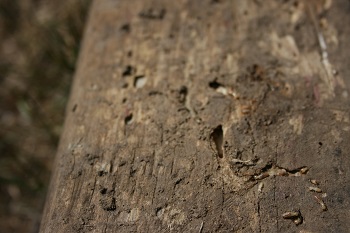A colony of termites can cause significant damage to your home’s structure as well as the appliances. If this is the case, you and your family may be in danger, as structural weakening could mean that the building could collapse at any time. Termites are the cause of around $5 billion worth of property damage every year, not even counting the medical expenses incurred because of termite-related accidents.
Another problem with these pests is that each species of termites requires different extermination methods. To protect yourself, your family, and your property from these silent destroyers, you have to learn the different species and how to get rid of them. That’s what you’ll learn about in this article.
Subterranean Termites
As the name suggests, these termites live underground, and a colony can have as many as 2 million members. This species of termites can chew through soft soil, wood, and just about anything that’s not rock, plastic, or metal. If the subterranean structure of your home doesn’t have a layer of metallic sheet to prevent the advances of these termites, the entire structure could collapse. This threat alone makes these termites the most destructive species of all.
Formosan Termites
These termites were originally from China, and they are by far the fastest reproducer and aggressive species of termites in Australia. They can dig tunnels incredibly quickly, and they aren’t afraid to swarm threats, much like ants would. If you’re at risk of a Formosan termite infestation, you have to make sure they are dealt with as soon as possible.
Dampwood Termites
Dampwood termite species, as the name suggests, only build colonies in wet pieces of wood. These termites are usually larger compared to the other termite species, and because of their specific nesting behavior, they are restricted to areas with a lot of rainfall. If you live in such an area, you need to set up regular inspections to prevent an infestation from this termite species.
Drywood Termites
On the opposite end, we also have Drywood termites that can cause major property damage. Unlike the subterranean species, these termites don’t make tunnels in the soil. Instead, they dig tunnels through the wooden structures of your home. You may not even know that these termites exist at times. That’s why you have to set up regular pest inspections to make sure that there’s no secret infestation that you need to worry about.
Conehead Termites
Conehead termites don’t dig tunnels, but they do make nests in wood and timber. They roam around like ants to look for better places to build a new nest. If you’re facing an infestation of this type of termite, you will see piles of wood dust on the ground in several places in the home.
Signs of Termite Damage
You have to pay close attention to the signs to put an end to an infestation before it becomes serious. At first, the signs may not be obvious, but that shouldn’t make the threat any less severe. Some of the most common signs include mud tubes, hollow woods, wood dust piles, and clumps of dead termites. If you see these signs and they’re getting more prominent, get in touch with All Guard to check the property for you.
If you’re looking for a termite & pest control service in Melbourne, click here to get in touch with us today! We’re happy to help.

